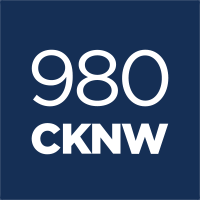With a blast of arctic air on its way to Metro Vancouver, the region is gearing up for winter.

In the wake of the 2016-2017 winter season, one of the most extreme the region has seen in years, TransLink says it’s taking new steps to prepare.
In order to prevent SkyTrain disruptions, the transit authority is installing new heat tracing on power rails to prevent ice buildup, along with cover-boards to protect from snow buildup.
De-icing trains will also be used to prevent ice buildup, with trains scheduled to run through the night during snowfalls in order to keep tracks clear.
Extra staff will also be deployed to stations to communicate with passengers.
TransLink is also rolling out a trial on new “tire socks” for buses headed to Burnaby Mountain — a perennially tricky destination for TransLink owing to its steep hills and higher elevation.
The socks cost about $200 for a pair, and contain kevlar wires for added grip.
“We plan to do a trial of the socks on Burnaby Mountain routes, if conditions reach a certain point. We’ll install them at Production Way University Station, on four buses that will serve as shuttles up the mountain,” said Coast Mountain Bus Company’s vice president of operations Don Palmer.
In previous snowy seasons, TransLink buses — particularly the articulated models — have been rendered inoperable in many areas where snow buildup has caused them to lose traction.
TransLink said it will also be working with communities to better coordinate which transit routes will be prioritized for snow clearing.
New homeless shelter spaces
The dropping temperatures also come with concerns for the Metro Vancouver’s homeless population — estimated in September to be at least 3,600 people.
Last winter, the BC Coroners Service issued a warning after three homeless people’s deaths were linked to the cold weather.
For the first time ever, Vancouver’s Union Gospel Mission (UGM) says it will be opening semi-permanent additional cold weather shelter spaces.
In previous years, UGM has opened additional drop-in shelter spaces on an emergency basis only during cold snaps.
WATCH: Cold snap responsible for deaths

Spokesperson Jeremy Hunka said UGM will be opening the 20 new spaces on Friday, which will remain available until March.
“Everybody knows what it’s like to be cold, but when you don’t have a place to warm up, that cold really sinks in to your bones,” Hunka said.
“And when it’s a wet cold, it can get very dangerous very quickly. People are already vulnerable because they have been on the street and their immune system is already diminished.”
Hunka said UGM has hired two new staff in order to assist with the spaces, which he admits will put a strain on the non-profit’s resources.
“If people want to get involved they can always make a donation at UGM.ca, or support other charities who are working in other parts of Metro Vancouver. We’re seeing a huge need right across the region.”
Hunka added that people can also help by donating lightly-used warm clothing, waterproof boots, gloves and rain jackets.
WATCH: Scramble for salt in Vancouver (aired Jan. 6, 2017)

Cities lay out snow plans
Earlier this week, the City of Vancouver laid out its own plans for snowy weather, after icy streets caused chaos amid a shortage of road salt.
The city said it is expanding the coverage of snow removal areas to include pedestrian paths, bus stops, arterial corner ramps and priority laneways to help with trash collection.
It has also more than doubling its snow removal budget and increasing salt stockpiles and expanding its priority snow clearing routes.
The city is also adding new equipment, including traffic cameras on some priority routes, new dump trucks, snow blowers and utility vehicles and putting winter tires on non-commercial city fleet vehicles.
The City of Surrey said it has about 14,000 tonnes of salt ready to roll out should the region get a dump of snow, along with 63 pieces of equipment to help clear it.
Drivers on most B.C. highways are also being reminded that they will require winter tires — either with the M+S (Mud and Snow) or the 3-peaked mountain and snowflake symbol.
-With files from Emily Lazatin, Amy Judd and Jesse Ferreras
- White Rock fatal stabbing suspect and victim may have been in physical altercation: IHIT
- High-profile B.C. sex offender Randall Hopley pleads guilty to 3 charges
- BC Hydro offers free AC units to lower-income, vulnerable customers
- B.C. to ban drug use in all public places in major overhaul of decriminalization









Comments